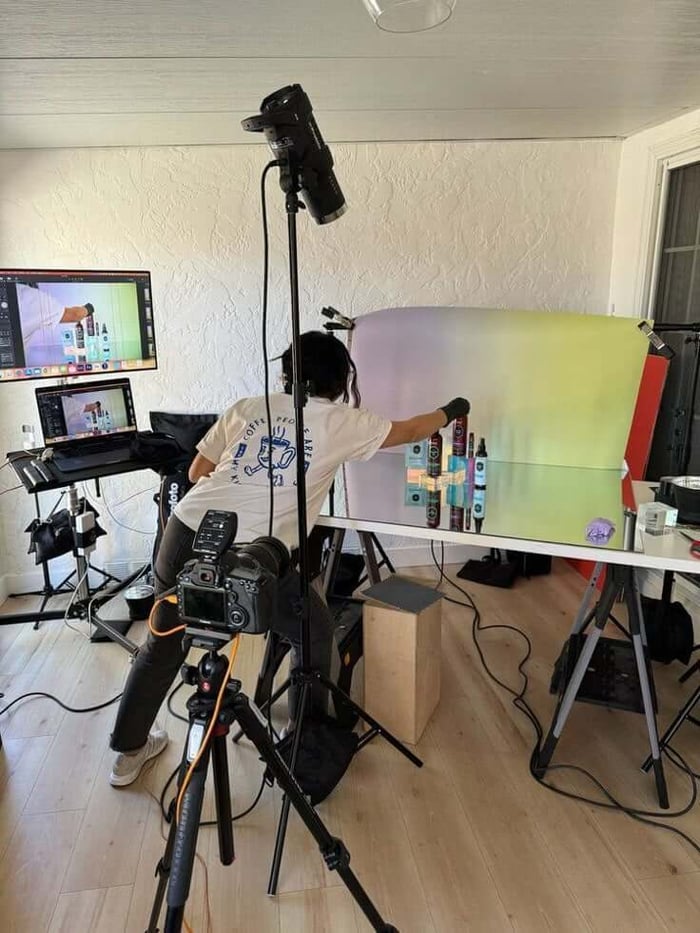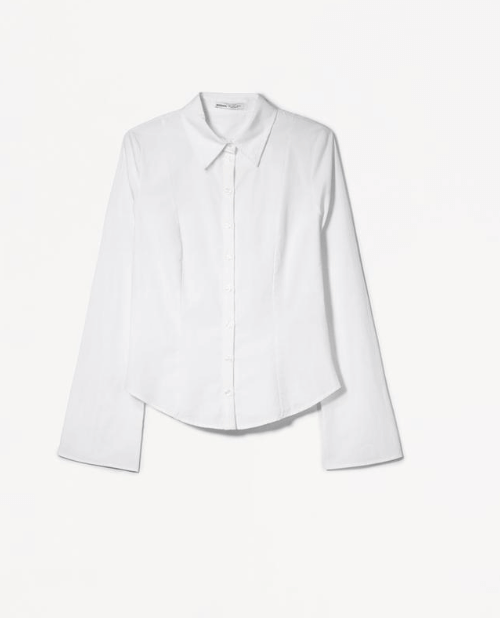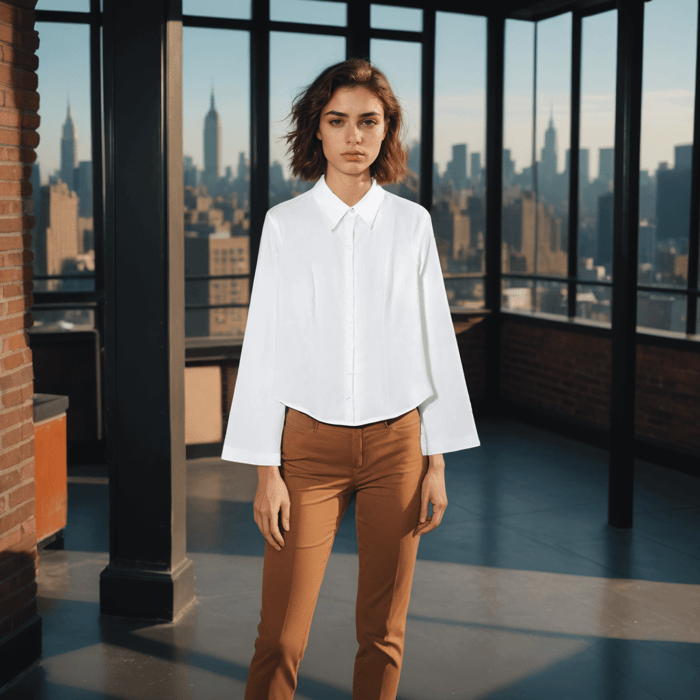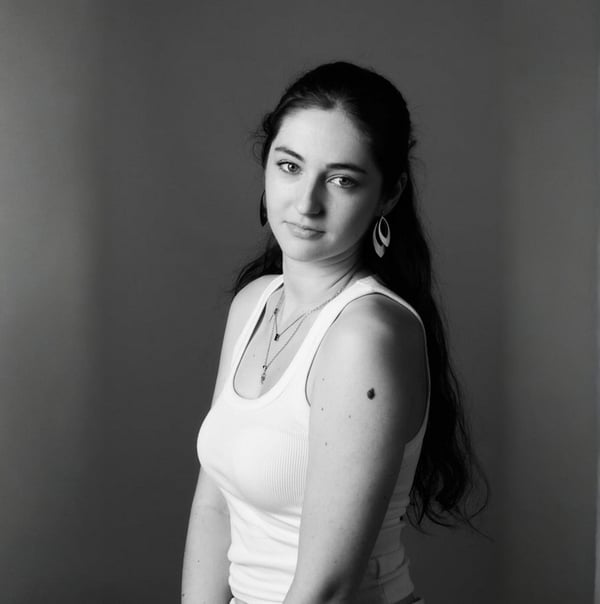The Best Tools for Flat Lay Design You Should Be Using
Table of Contents
- Why Tools Matter in Flat Lay Photography
- Cameras and Tripods for Flat Lay Design
- Lighting Tools for Flat Lay Photography
- Styling Props and Backgrounds
- Editing Software for Post-Processing
- Modelia: AI Flat Lay Enhancement and Design
- Organization and Workflow Tools
- Accessories That Make a Difference
- Recap of the best tools for flat lay design
- FAQs: Best Tools for flat lay design
Creating a visually compelling flat lay is both an art and a strategy. It requires an eye for composition, color coordination, styling, and technical know-how. But beyond creative talent, having the right set of tools can elevate your flat lay game dramatically. Whether you're a brand, content creator, or stylist, using the best tools for flat lay design can make your process smoother, faster, and more professional.
This comprehensive guide walks you through the most effective tools available today, from photography gear and editing software to AI platforms like Modelia, which is transforming how we design, enhance, and scale flat lay visuals.

Why Tools Matter in Flat Lay Photography
Flat lays are used widely in branding, social media campaigns, product advertising, food styling, and nearly every form of digital content creation. Their overhead perspective and stylized arrangement offer a compelling way to showcase not only products but also personality, mood, and storytelling in a single frame. In a saturated visual market, where audiences scroll quickly and judge content in mere seconds, having strong flat lay photography becomes essential.
To truly stand out in this competitive visual space, your flat lays must not only be clear and focused but also exhibit thoughtful composition, harmonious color schemes, and an aesthetic that aligns with your brand identity. While creativity and visual instinct are vital, the tools you choose to support your creative process can significantly impact your efficiency and final outcome.

The right tools help ensure consistency across all your visuals, maintaining a high standard of visual quality whether you're creating content for Instagram, online catalogs, or editorial spreads. They also allow you to work more efficiently, reducing the time spent adjusting camera settings or manually editing photos. Moreover, they enable greater freedom to explore new visual concepts, experiment with lighting techniques, and adapt your designs for different audiences or platforms.
Perhaps most importantly, the right set of tools allows you to scale your content. With platforms demanding more frequent and diverse content than ever, having a toolkit that supports fast, high-quality output is invaluable. From initial layout to final export, each piece of gear or software in your arsenal can help streamline production and enhance your flat lay storytelling.
With that in mind, let’s explore the top tools every flat lay designer should consider to elevate their visual content and workflow..
Cameras and Tripods for Flat Lay Design
A great flat lay starts with a well-shot photo. Here are essential tools for image capture:
1. DSLR or Mirrorless Cameras
Canon EOS R, Sony Alpha Series, Nikon Z Series
Offer manual control, high resolution, and interchangeable lenses
2. Smartphone Cameras
iPhone Pro models, Google Pixel, Samsung Galaxy Ultra
High-quality lenses and built-in editing make them great for fast content
3. Overhead Tripods
Manfrotto 055, Neewer Overhead Arm Tripods
Keep the camera stable and centered above your setup for consistency
A stable, high-angle shot is fundamental for getting a flat lay that looks crisp and professional. Avoid hand-held shots, as even slight movement can disrupt alignment.
Lighting Tools for Flat Lay Photography
Lighting transforms the feel and overall impact of a flat lay image. Even the most artfully arranged setup can fall short if the lighting is uneven, too harsh, or improperly balanced. The key to achieving professional results lies in understanding how different lighting sources contribute to the tone, texture, and clarity of your composition.
Natural light remains one of the most effective and accessible options for flat lay photography. It offers a soft, organic quality that flatters colors and materials without overexposing details. Positioning your setup near a north-facing window often yields the best results, as it provides consistent and diffused light throughout the day. When natural light is too direct or strong, sheer curtains or homemade diffusers can be used to soften the intensity and eliminate harsh shadows.
For those working in controlled environments or shooting at night, artificial lighting is a practical alternative. LED softbox kits from brands like Neewer or Godox are ideal choices. These lights are designed to mimic natural daylight and can be easily adjusted to suit different setups. By diffusing light evenly across your layout, softboxes minimize unwanted glare and help maintain color accuracy and tonal balance.

In addition to primary lighting sources, using reflectors and diffusers can significantly enhance the lighting setup. Simple white foam boards or multifunctional 5-in-1 reflector kits can bounce light back onto the subject, reducing unwanted shadows and brightening darker areas. These tools also help maintain an even tone across the entire frame, ensuring that no part of the image is underlit or overexposed.
Ultimately, the goal of lighting in flat lay photography is to maintain even, flattering illumination that enhances the subject's form, texture, and detail. Regardless of whether you use natural or artificial sources, carefully positioning your lights and incorporating diffusion techniques will elevate your photography from amateur to professional quality.
Styling Props and Backgrounds
The magic of a flat lay lies in the details, and one of the most influential elements is the choice of props and backgrounds. These components don’t just fill space—they create mood, context, and help tell a visual story that resonates with your audience. A well-thought-out prop selection can transform a simple product shot into a captivating scene that invites viewers in and elevates the brand narrative.

The backdrop is often the foundation of a compelling flat lay. It sets the tone, anchors the composition, and supports the color palette. Professional photographers and content creators often rely on interchangeable background boards that mimic surfaces such as marble, wood, linen, or matte pastel paper. Brands like Replica Surfaces and Club Backdrops offer versatile options that cater to every aesthetic, from minimalism to rustic charm. A seamless background ensures that the focus remains on the subject while subtly enhancing the overall visual appeal.
Beyond the background, the selection of props is crucial in guiding the eye and reinforcing the story you’re telling. Carefully curated lifestyle items such as foliage, ceramic plates, office tools, books, or jewelry can complement the main subject without overpowering it. Each prop should serve a purpose, either to balance the layout, support the theme, or enhance the color contrast. Too many unrelated items can clutter the scene and dilute the message, while too few can leave the frame feeling empty or unfinished.
To help maintain structure during setup, many professionals use styling tools like clear acrylic blocks or grid mats. These subtle tools allow for precise alignment and layering, making it easier to create depth, symmetry, or playful asymmetry as needed. Small risers can also lift elements slightly off the surface, introducing gentle shadows that add dimensionality to the image.
Ultimately, styling props and backgrounds are more than decorative. When used thoughtfully, they help establish a strong visual identity and elevate the emotional impact of your flat lay designs.
These tools create the story in your flat lay. Be thoughtful with color theory, texture contrasts, and negative space.
Editing Software for Post-Processing
Even the best photos benefit from editing. Here are top software options:
Perfect for color correction, brightness, and contrast
Allows batch editing for consistent looks
Great for retouching, removing distractions, or composite editing
3. Snapseed or VSCO (Mobile apps)
For quick, high-quality edits on your phone
Editing Advice: Don’t over-process. Keep edits natural, sharp, and aligned with your brand identity.
Modelia: AI Flat Lay Enhancement and Design
When it comes to automating and scaling your flat lay content creation, few tools are as transformative as Modelia. While other tools help you shoot and edit, Modelia helps you elevate and extend the visual impact of your flat lays with the power of artificial intelligence.
What Is Modelia?
Modelia is an AI platform specially for fashion brands and marketers specialized in virtual styling, image enhancement and content automation. For flat lay design, this means you can:
Upload a flat lay image and receive professional-grade enhancements
Eliminate the background of the image
Convert flat lays into high quality model photos or short-form videos for platforms like Instagram Reels or TikTok
Optimize lighting, sharpness, and composition with AI adjustments


Why It Belongs on the List of Best Tools for Flat Lay Design
Modelia allows creators to repurpose a single photo into multiple digital assets. You can maintain consistency across campaigns, adjust proportions for different social media formats, and generate new content variants, all from one visual starting point.
It saves time, reduces editing fatigue, and ensures each piece of content meets professional standards. Especially for fashion and lifestyle brands, Modelia’s AI understands how to handle clothing textures, styling elements, and modern aesthetics.
Sign up and start creating by yourself!!
Organization and Workflow Tools
Keeping your flat lay shoots organized is essential for content teams and solo creators alike.
1. Trello or Asana
Plan shoot days, track prop inventory, and coordinate content delivery
2. Canva or Figma
Design layouts in advance and visualize your composition digitally
3. Google Drive or Dropbox
Store and organize images, props lists, and campaign files
Having a consistent workflow not only increases productivity but helps maintain a cohesive visual identity.
Accessories That Make a Difference
Small additions can significantly improve the ease and quality of your flat lay sessions:
1. Remote Camera Triggers
Minimize shake and streamline overhead shooting
2. Lenses
50mm or 35mm prime lenses work great for sharp top-down shots
3. Cleaning Kits
Keep lenses, props, and backgrounds spotless
Professional presentation requires attention to every detail. Fingerprints, dust, or smudges can ruin an otherwise perfect image.
Recap of the best tools for flat lay design
Great flat lay photography doesn’t just come from talent, it comes from having the right tools. From camera gear and lighting setups to editing software and styling kits, every element plays a role in the final image.
Among these, platforms like Modelia stand out for their ability to modernize and streamline the entire content creation pipeline. By combining your creative eye with Modelia’s intelligent features, you gain a significant edge in creating consistent, scalable and eye-catching flat lay visuals.
Whether you're building a lifestyle brand, managing a product catalog, or curating a visual blog, investing in the best tools for flat lay design is the first step toward building impactful, memorable content.
Start with the basics, master the techniques, and let platforms like Modelia help you go from good to extraordinary.
FAQs: Best Tools for flat lay design
1. What is a flat lay design tool?
A flat lay design tool is a digital platform or software that helps users create top-down visual compositions, often used in fashion, product photography, or social media. These tools allow you to arrange items virtually, adjust lighting, shadows, and color balance to create clean, aesthetic layouts that mimic real-life flat lays.
2. What are the best tools for flat lay design in 2025?
Some of the best tools for flat lay design in 2025 include Modelia, Canva, Adobe Photoshop, Placeit, and Fotor. These platforms offer AI-assisted composition, drag-and-drop editing, and professional-grade templates that make it easy to design stylish and realistic flat lays for fashion, e-commerce, or marketing use.
3. Why should fashion brands use flat lay design tools?
Fashion brands use flat lay design tools to create visually appealing product displays without expensive photoshoots. These tools help brands highlight outfits, accessories, or collections in cohesive layouts that attract attention on websites and social media, improving engagement and conversion rates.
4. Can AI tools create flat lay designs automatically?
Yes. AI-powered tools like Modelia and Fashn.ai can generate realistic flat lay designs automatically. They use generative AI to position garments, accessories, and backgrounds based on brand style, lighting preferences, and target aesthetic, reducing manual editing time dramatically.
5. How can I make my flat lay designs look professional?
To make your flat lay designs look professional, maintain consistent lighting, use color harmony, and arrange objects with balanced spacing. Choose a high-quality background, keep the frame uncluttered, and use tools with smart shadow and texture effects to enhance realism.
6. Are flat lay design tools worth it for small businesses?
Absolutely. Flat lay design tools are cost-effective alternatives to studio photography. Small fashion or lifestyle brands can use them to produce high-quality visuals for social media, ads, and online stores without hiring professional photographers or stylists.
How would you rate this article:
Related Articles
- Create Sketches from Photos with AI
- Best AI Clothing Design Software for Next-Level Fashion Design
- How AI Is Shaping the Future of Kids’ Fashion
- Expert Mannequin Modeling Techniques for Perfect Shots
- The 6 Best Free Online Facial Expression Changer Tools to Customize Emotions in Images
- Top AI Fashion Companies Innovating the Future of Fashion with Artificial Intelligence
- Old School Fashion Trends That Are Back in Style
- How to Create a Clothing Business Plan (Step-by-Step)
- What is Apparel Branding?
- How to Mirror an Image Step-by-Step
